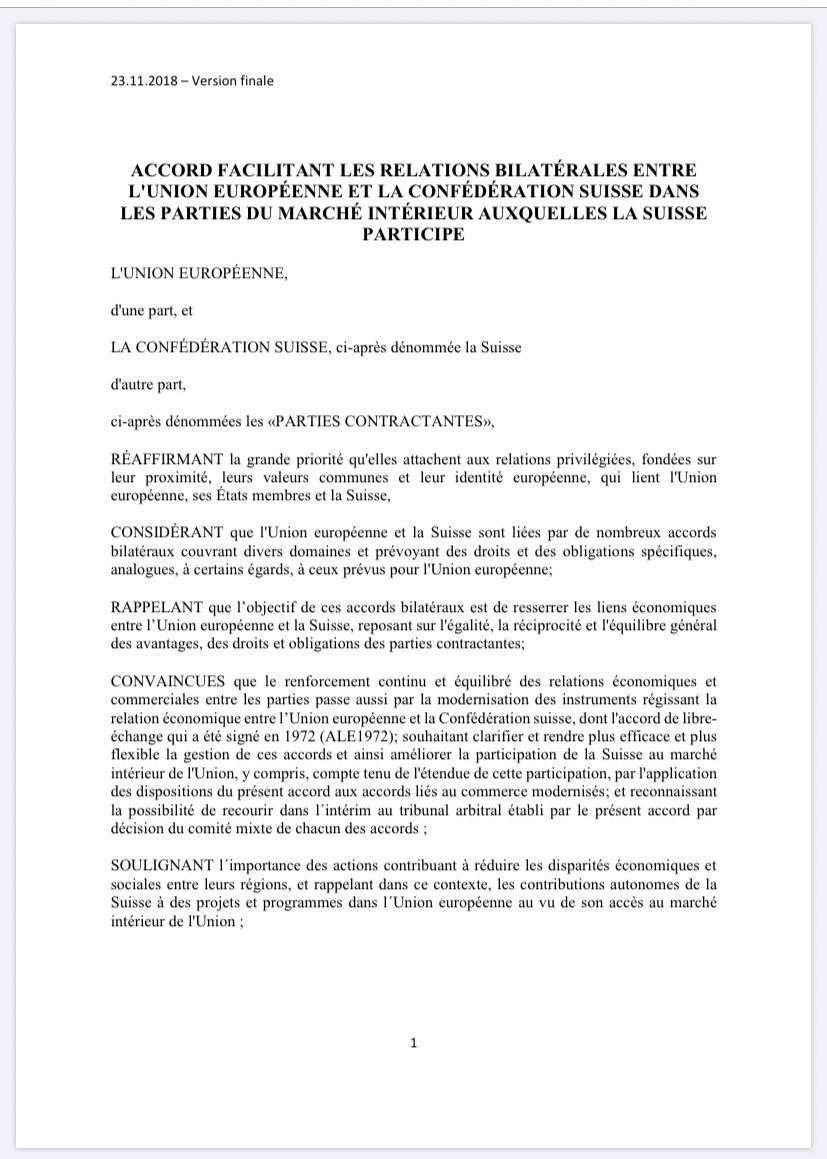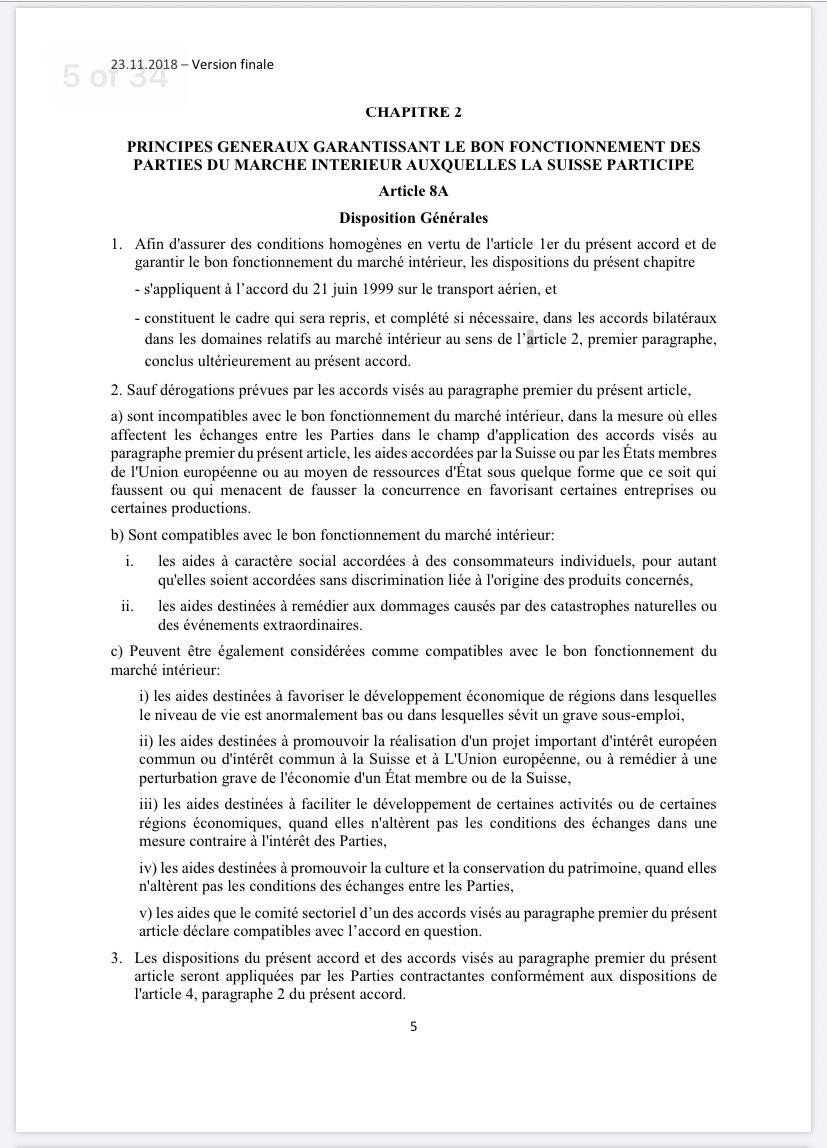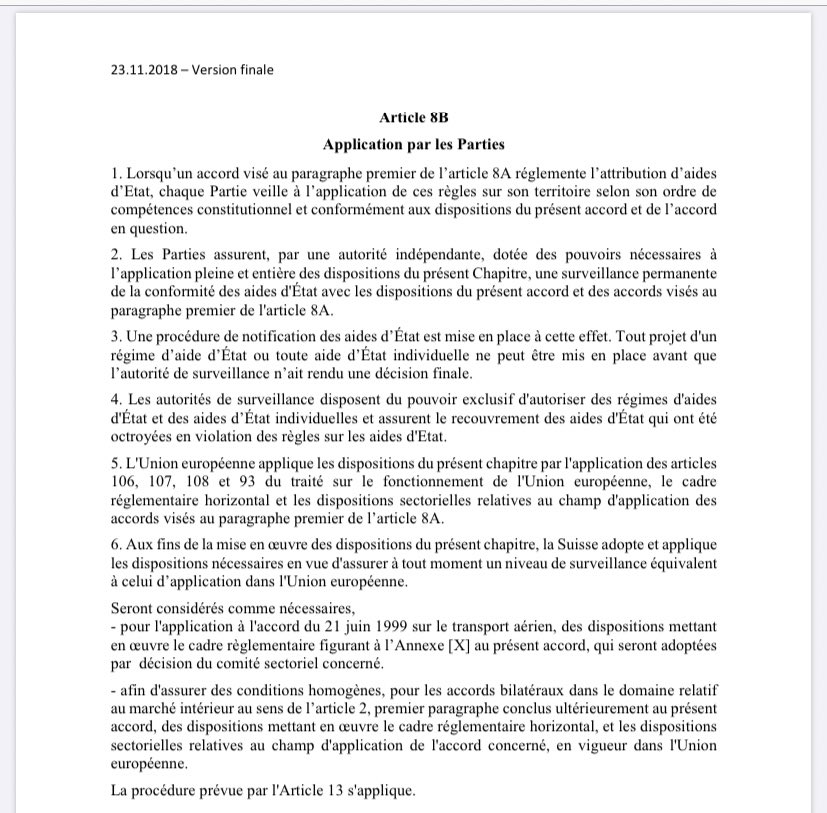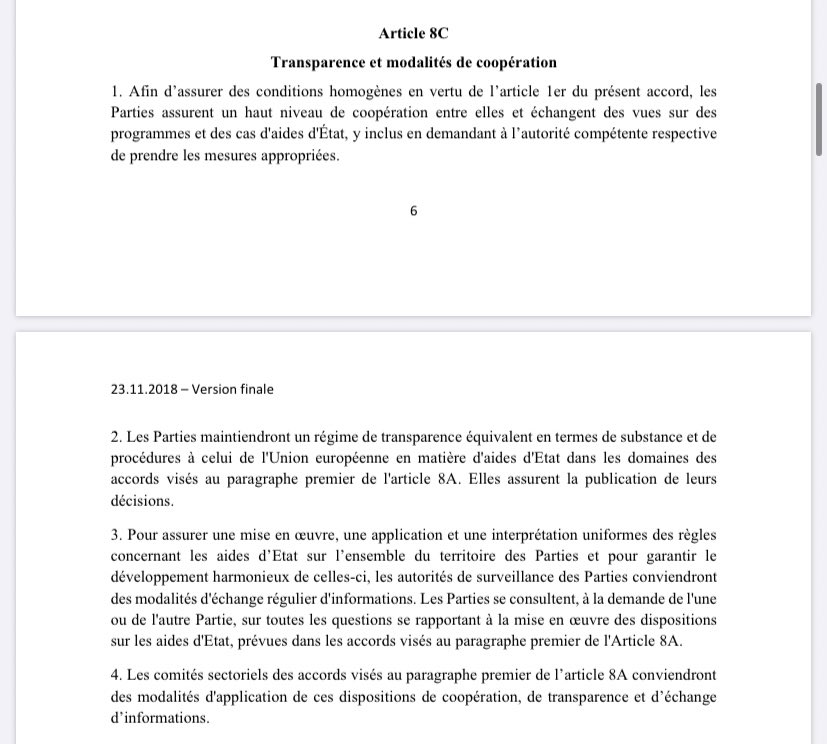A niche thread about state aid, Brexit, and Switzerland.
(With an idea for how the UK and the EU could break the negotiating deadlock over state aid.) https://institute.global/policy/swiss-solution-break-brexit-stalemate-over-state-aid">https://institute.global/policy/sw...
(With an idea for how the UK and the EU could break the negotiating deadlock over state aid.) https://institute.global/policy/swiss-solution-break-brexit-stalemate-over-state-aid">https://institute.global/policy/sw...
1. If you’re asking what on earth does Switzerland have to do with the Brexit negotiations on state aid, the story begins with a recent treaty between the EU and Switzerland – called an ‘Institutional Framework Agreement’.
https://www.fdfa.admin.ch/dam/dea/fr/documents/abkommen/Acccord-inst-Projet-de-texte_fr.pdf">https://www.fdfa.admin.ch/dam/dea/f... (text only in French or German)
https://www.fdfa.admin.ch/dam/dea/fr/documents/abkommen/Acccord-inst-Projet-de-texte_fr.pdf">https://www.fdfa.admin.ch/dam/dea/f... (text only in French or German)
2. It’s a treaty that the Swiss struck with the EU at the end of 2018, after more than 4 years of difficult negs. The idea was to create an institutional umbrella to 100+ bilat agmts between EU and CH through a single governance and dispute resolution system.
3. However, during the IFA negs, the EU raised the question of state aid and asked CH to follow relevant EU rules (sounds familiar?). This has been the EU’s concern for a while (see below from 2007), since CH doesn’t have a single domestic subsidy regime. https://ec.europa.eu/commission/presscorner/detail/en/IP_07_176">https://ec.europa.eu/commissio...
4. Unsurprisingly, the Swiss didn’t like the idea. This was largely due to their constitutional situation: the cantons tend to dislike the idea of anything “federal”, let alone an extraterritorial constraint (from the EU) on its ability to subsidise local firms (esp through tax).
5. The eventual compromise the Swiss struck with Brussels was one based on a new broad subsidy control framework, which will be enforced by a domestic monitoring authority. It’s a compromise which gives the country a degree of discretion over the precise shape of its regime.
(6. A side note: This framework isn’t yet applicable in CH. It’ll apply only to aviation + future market access agreements. But, as CH and EU want to “modernise” their FTA and MRAs, many expect that its scope will eventually encompass the renegotiated FTA between EU and CH.)
7. There‘re three broad components to this compromise in the IFA:
(i) First, there’s agreement on broad objectives to guide domestic subsidy control systems in both jurisdictions. (This effectively mirrors Art 107 of the TFEU.)
(i) First, there’s agreement on broad objectives to guide domestic subsidy control systems in both jurisdictions. (This effectively mirrors Art 107 of the TFEU.)
8.
(ii) Then, there’re obligations around enforcement. The IFA sets up a “two-pillar” system, whereby the Commission does the usual job of monitoring member states and CH is asked to set up a new “supervisory authority” with “full enforcement powers”.
(ii) Then, there’re obligations around enforcement. The IFA sets up a “two-pillar” system, whereby the Commission does the usual job of monitoring member states and CH is asked to set up a new “supervisory authority” with “full enforcement powers”.
9.
(iii) Finally, there’re provisions for “transparency and cooperation”. CH is asked to maintain “an equivalent transparency regime in terms of substance and produced to that of the EU.”
(iii) Finally, there’re provisions for “transparency and cooperation”. CH is asked to maintain “an equivalent transparency regime in terms of substance and produced to that of the EU.”
10. Taken together, the IFA creates a reciprocal obligation, on both sides, to maintain a domestic state aid framework, which is adequately enforced and in line with broad principles. Within these boundaries, the Swiss have a degree of discretion about the shape of their regime.
11. It’s an interesting precedent for several reasons. It vindicates the UK in saying that the EU’s ask of dynamic alignment has been unreasonable. True, the context is different here, but Brussels didn’t even agree to this in the Swiss case (with closer integration in the SM).
12. It also shows that there’s a precedent for landing zone if - and that’s a big caveat - the UK were prepared to commit to a rules-based system, with an independent domestic supervisor. This would give the EU reassurance it needs, while giving the UK flexibility it wants.
(13. Clearly, the Swiss IFA doesn’t provide the exact blueprint for the UK; it was negotiated in the unique context of EU-Swiss relations. But it sketches out the broad contours of a reasonable compromise.)
14. And, finally, it shows how difficult it is to oppose the EU on the points of principle (which has been No10’s neg strategy to date) and to succeed. The EU is unlikely to drop its principles, but that doesn’t mean it won’t be possible to find a flexible solution around them.
15. So far, No10 has argued that a standard FTA doesn’t warrant any obligations to be bound by constraints on domestic policy (incl on subsidies). Instead, the FTA subsidies chapter should be based around WTO subsidy rules, perhaps with a few “pluses”.
15. This hasn’t been enough for the EU. It argues this would create an asymmetry or obligations: EU firms abide by robust state aid rules, and so UK exporters to the single market would “free-ride” on these rules. Given the high trade flows, EU argues, the risk is high.
16. If the UK is serious about a deal, it has to find another way to give reassurance to EU. The ‘trust us, we’re good guys’ strategy hit the wall of the reality. The only credible alternative is to agree to a domestic framework, based on broad objectives similar to the EU’s, and
17. This framework has to be underpinned by a mechanism (eg a monitoring authority) that offers ex-ante assessment of risk to competition; decision-making transparency; and has the powers to recover aid if proven harmful to the trade between the EU and the UK.
17. Aside from various benefits that such a domestic subsidy control regime could offer (see, eg, the excellent IfG paper on this), there’s two reasons why No10 should care. https://www.instituteforgovernment.org.uk/publications/state-aid">https://www.instituteforgovernment.org.uk/publicati...
18. The first is Northern Ireland Protocol and UKIM Bill. One of No10’s headaches is the broad scope of Art 10 in the Protocol (which could affect GB firms). Agreeing to clear and enforceable rules applying to GB would limit what can be done through Protocol with respect to GB.
19. This would, then, allow the PM to drop some of the controversial elements of the UKIM Bill. He could even put a credible case to the EU that Art 10 of the Protocol should be amended in light of the UK’s new domestic regime (and the relevant FTA commitments).
20. The second reason is that, if it were to compromise on state aid, the UK could then seek concessions in other areas, esp on its offensive asks (mutual recognition of prof qualifications, etc). What isn’t clear is whether the EU has yet thought about any such grand bargain.
21. Where does this all leave us?
Trapped in a situation where the UK doesn’t want to move to a compromise; the EU wouldn’t (yet) consider, and indicate to the UK, what a grand bargain might be; and a broad solution to their biggest headache lies just in front of them.
(End)
Trapped in a situation where the UK doesn’t want to move to a compromise; the EU wouldn’t (yet) consider, and indicate to the UK, what a grand bargain might be; and a broad solution to their biggest headache lies just in front of them.
(End)

 Read on Twitter
Read on Twitter





